In an age where technology is at the forefront and human interactions are cut down by the day, making us less human, less connected, and less alive, Matera’s sassi are a symbol and representation of the opposite. That which we’ve lost and are losing: human life that enriches humanity.
Once upon a time in 1948, there was an evil Minister that declared a small town in Basilicata, Italy a “national shame” because of its poor living. This poor village, in the literal sense of the word, lived with this stigma for a while and tried to change it for the better. Little did they know that what the Minister deemed a “national shame” was actually the true beauty of the town. This label is what led to a change and complete renaissance in the area. By the 1950s, 15,000 people were asked to move out due to outdated living conditions. It wasn’t until the 1980s and 90s that people began to return. In 1993, the town was finally acknowledged by UNESCO for it’s beauty and history. Unlike Cinderella, whose true beauty was unveiled with the help of a fairy godmother, this story is not a fairytale. This is the true story of the UNESCO World Heritage Site of i sassi (or rocks) of Matera, Italy.
What you’ll find in this article:
Stay: Sextantio Le Grotte della Civita Cave Hotel
Eat: La Lopa Restaurant
13 Things to Do in Matera:
- Cathedral of the Madonna della Bruna and St. Eustace
- Via Duomo
- View Point Panorama #1: Piazza Vittorio Veneto, the Aqueducts, and the night time bancarelle (markets)
- View Point Panorama #2: Church of Saint Peter Barisano
- View Point Panorama #3: Church and Convent of Saint Agostino
- La Gravina
- Santa Maria de Idris
- Vico Solitario and Local Artisan Craft: Cucù
- Rione Casalnuovo and Local Artisan Craft: Tufo
- Via Confalone and Local Artisan Craft: Cartapesta
- Via Bruno Buozzi and Local Artisan Craft: Bread Stamps
- View Point Panorama #4: Belvedere di Piazza Giovanni Pascoli
- View Point Panorama #5: Murgia Park
Matera Itinerary Map
How To Get Around Matera
Important Things to Keep in Mind
<h2 id=”stay”>
Where to Stay
Sextantio Le Grotte della Civita Cave Hotel
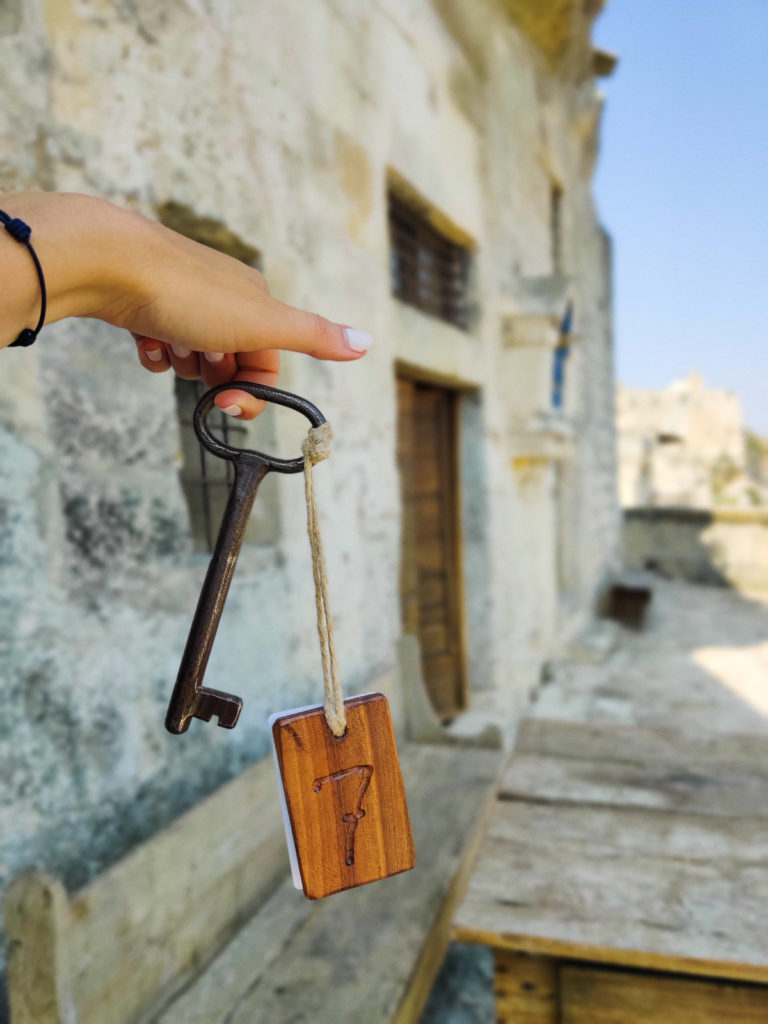
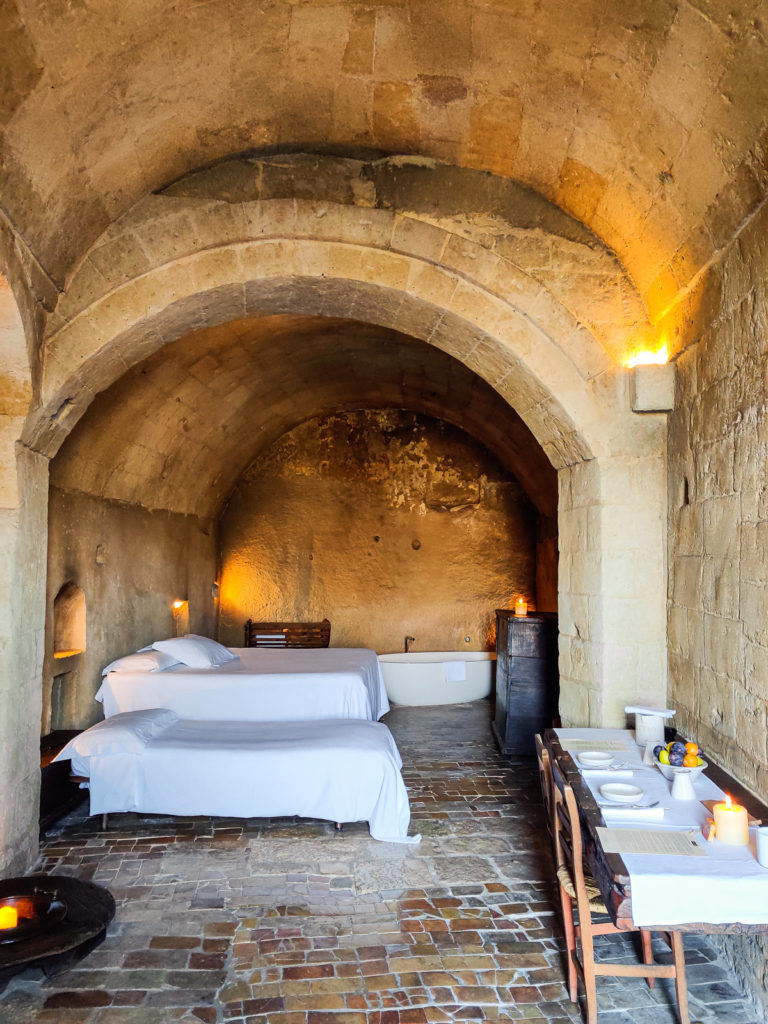
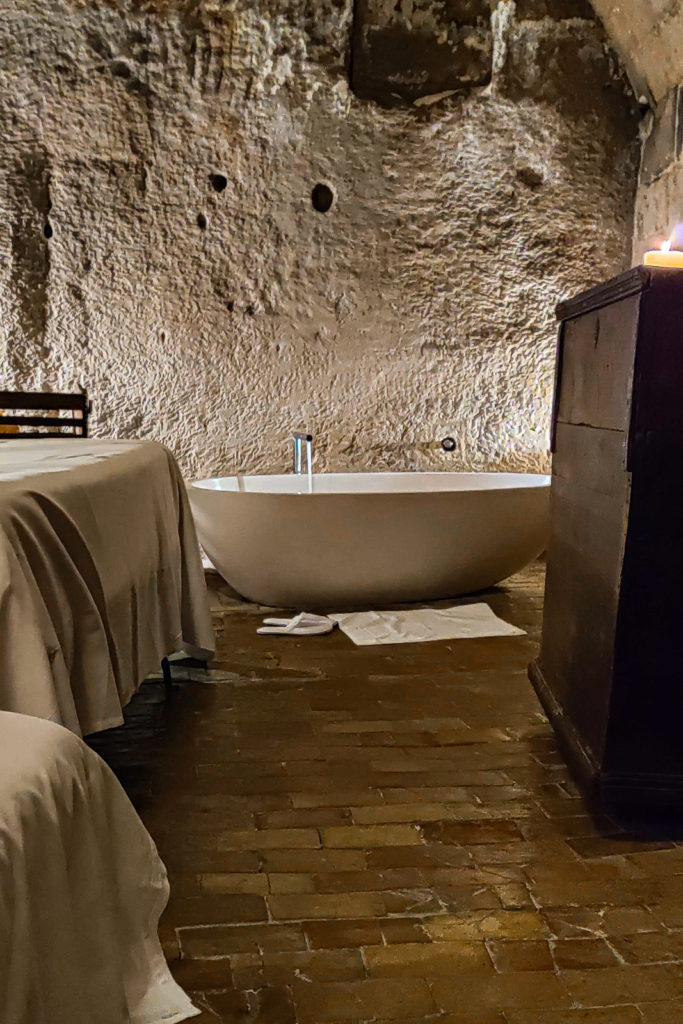
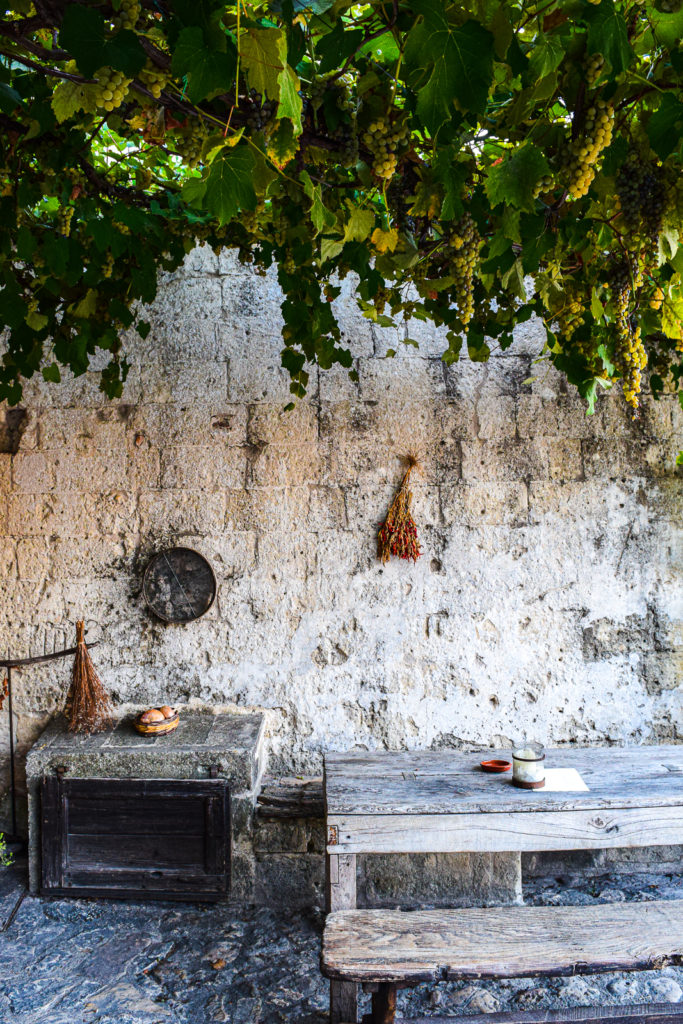
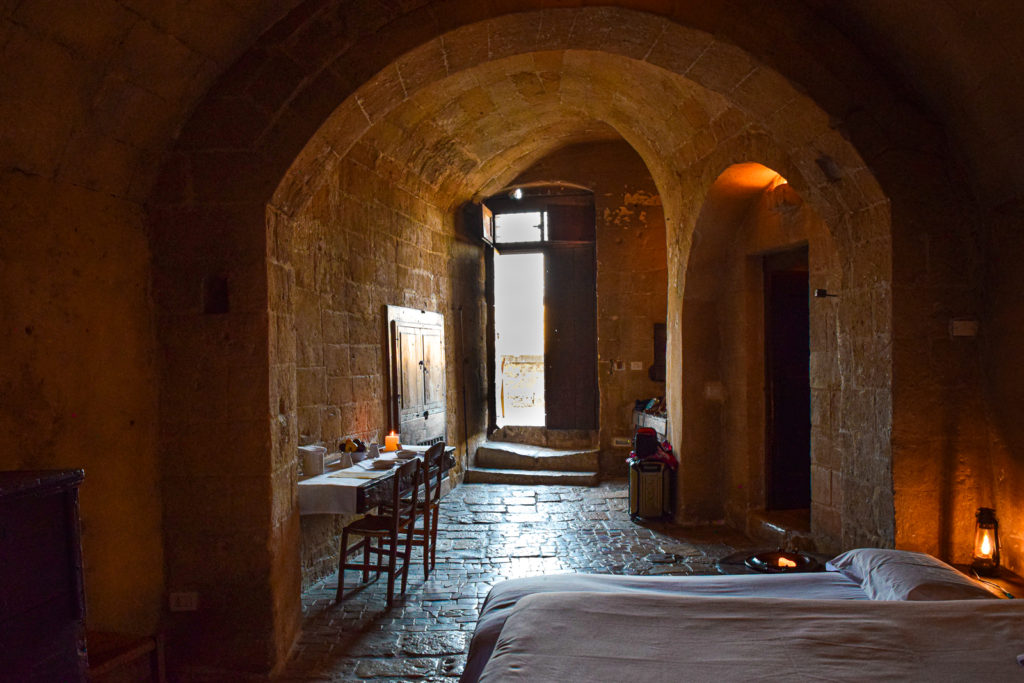
Sleep in Cave Hotel Sextantio Le Grotte della Civita in Matera, Basilicata
The term luxury is redefined at the cave hotel Sextantio Le Grotte della Civita located in the sassi area of Matera. This albergo diffuso, or dispersed hotel, brings to life the history, atmosphere, life, and soul of i sassi recognized as a UNESCO World Heritage Site. Every room you step into at Sextantio Le Grotte della Civita has been zealously preserved to revive the original structure and breakfast is held in the old 13th century rock hewn cave church. There are 18 caves or rooms and we stayed in Cave 7, which is a Superior room.
<h2 id”=eat”>
Where to Eat
La Lopa Restaurant
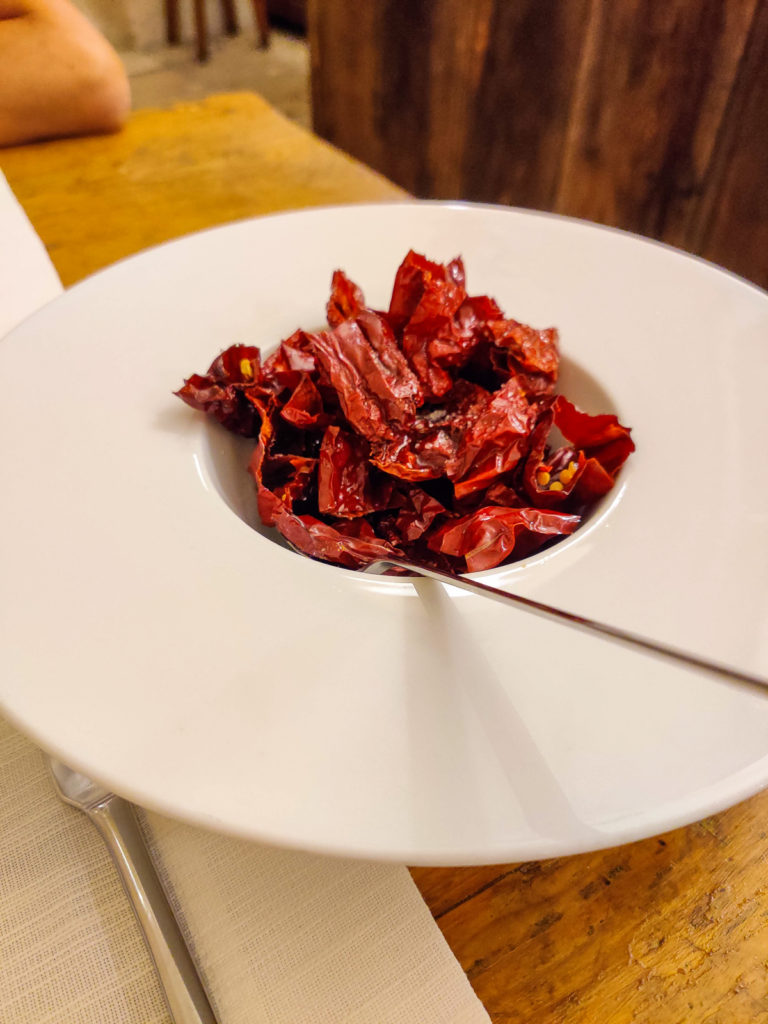
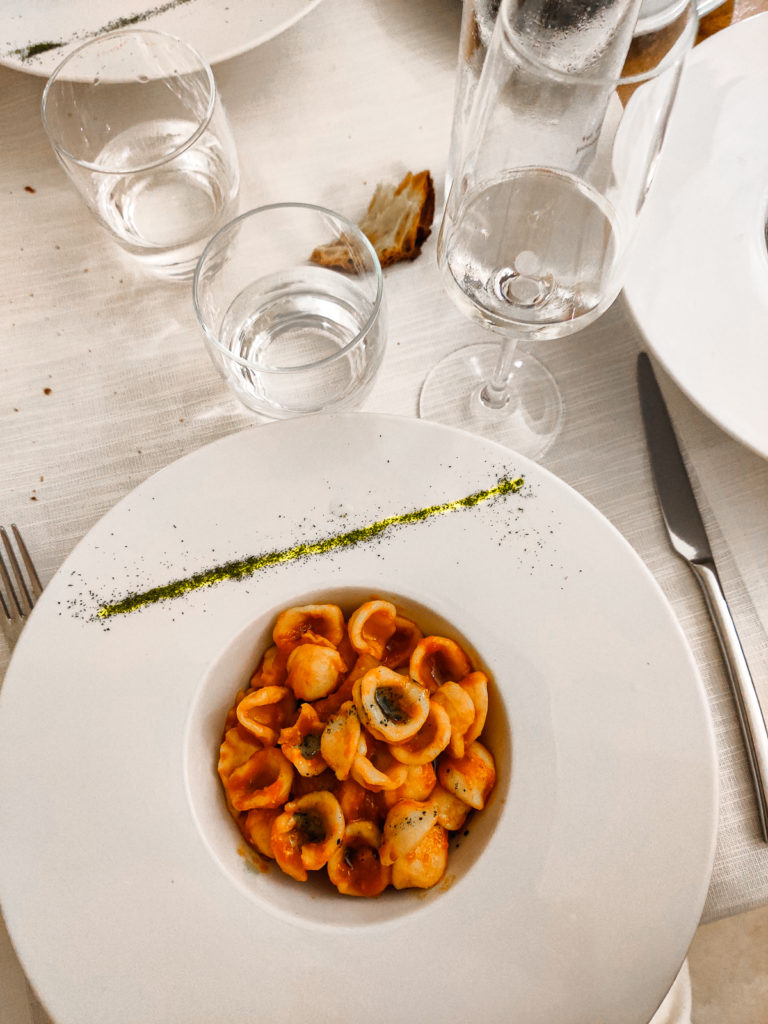
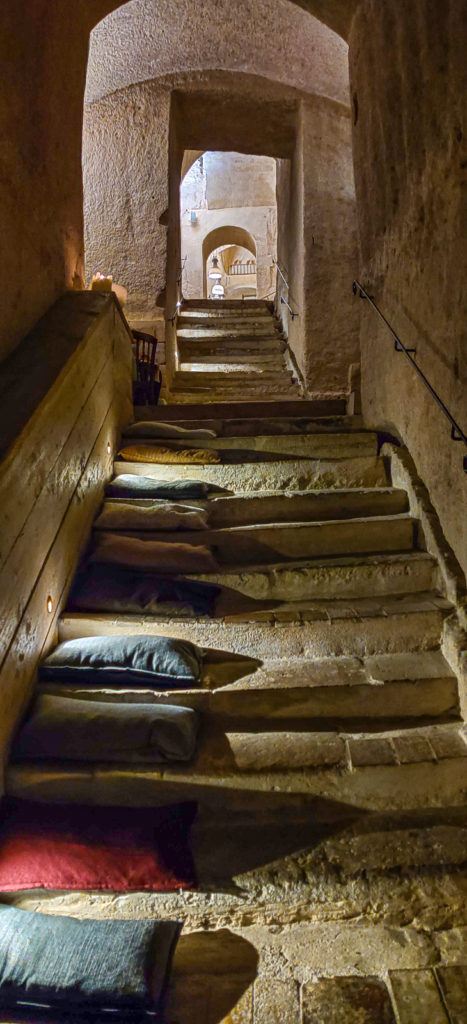
This Cave Restaurant in Matera Also Has a Hidden Underground Movie Room…
During my time at cave hotel Sextantio Le Grotte della Civita, they introduced me to more than just a piece of history and culture recognized by UNESCO. They introduced me to mouth-watering and unforgettable local delicacies and artisans as well. As we headed out to explore Matera, we asked Marienza, the local staff member, for a local dinner recommendation. We weren’t looking to eat in Matera at a fancy restaurant. We were looking for homemade food made by Nonna‘s (grandmas), local pastas of the day, simple fare etc. When it comes to where to eat in Matera, go with this local recommendation: La Lopa. At La Lopa, you can taste traditional specialties, such as peperoni cruschi, and food in a unique setting unlike any other.
<h2 id=”do”>
What to Do
<h3 id=”madonna”>
1. Cathedral of the Madonna della Bruna and St. Eustace
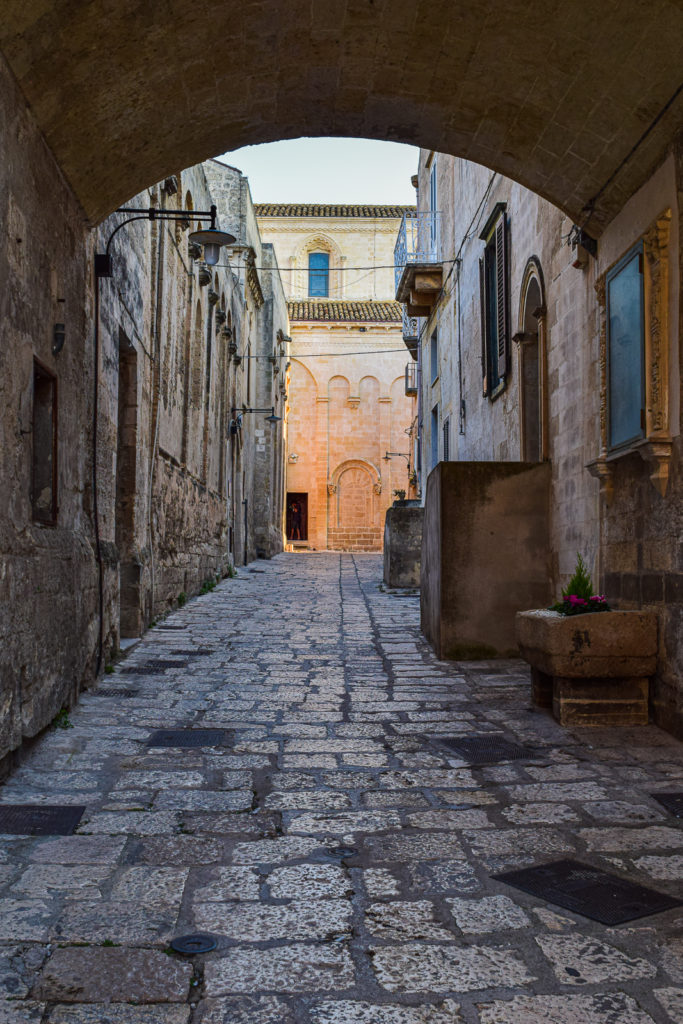
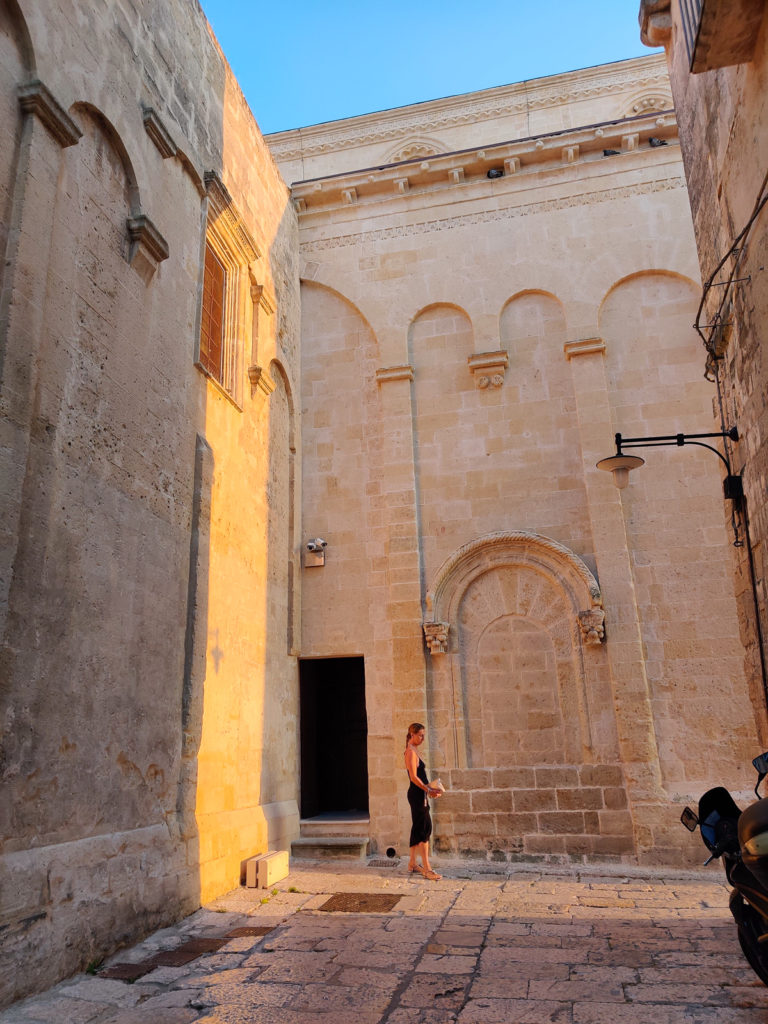
The Cathedral of Madonna della Bruna and Church of Saint Eustace is dedicated to the Virgin Mary. It is located at the highest point of the city of Matera. What makes it so unique is that it is the point that divides the two sassi area, or prehistoric cave dwellings: Sasso Caveoso and Sasso Barisano. Understanding the layout of Matera can be a bit difficult at first until you’re actually in it and walking around, so use this Cathedral as your point of reference. It’ll make things much easier. But of course, stop to admire the Apulian Romanesque style of this 13th century Cathedral as well located on the site of the ancient Church of Saint Eustace, protector of the city.
<h3 id=”duomo”>
2. Via Duomo
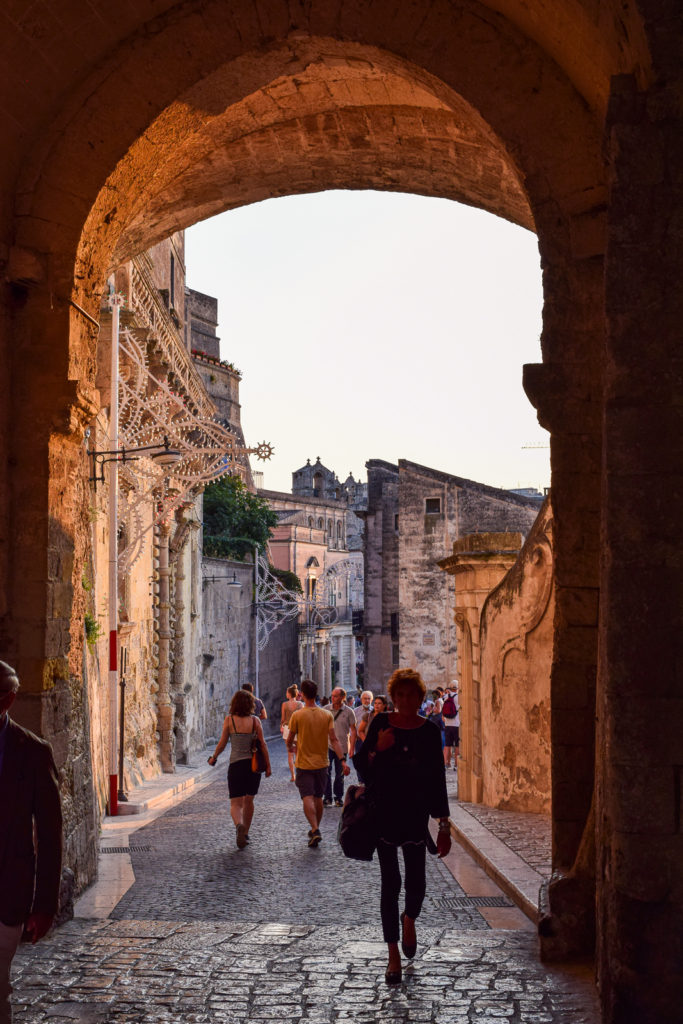
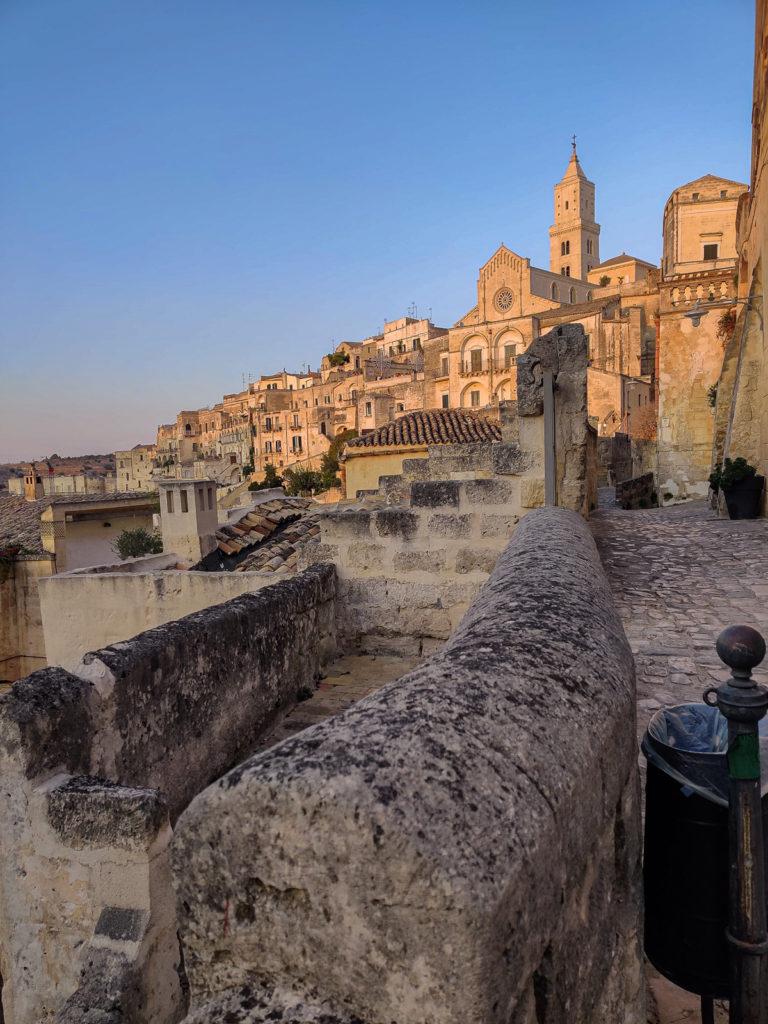
There’s one street that runs like a thread through needle through the entire city and that’s Via Duomo. It’s the flattest street and the easiest to stay on to avoid getting lost. Via delle Beccherie turns into Via Duomo, which turns into Piazza Vittorio Veneto and then Via San Biagio. It kind of cuts through the two areas of Matera Sasso Caveoso and Sasso Barisano. There are hundreds of cobblestone roads that break off from Via Duomo, extending up and down into the Sassi. This is your opportunity to get lost in this maze like town, while enjoying some of the local stores along the way.
<h3 id=”vp1″>
3. View Point Panorama #1: Piazza Vittorio Veneto, the Aqueducts, and the night time bancarelle (markets)
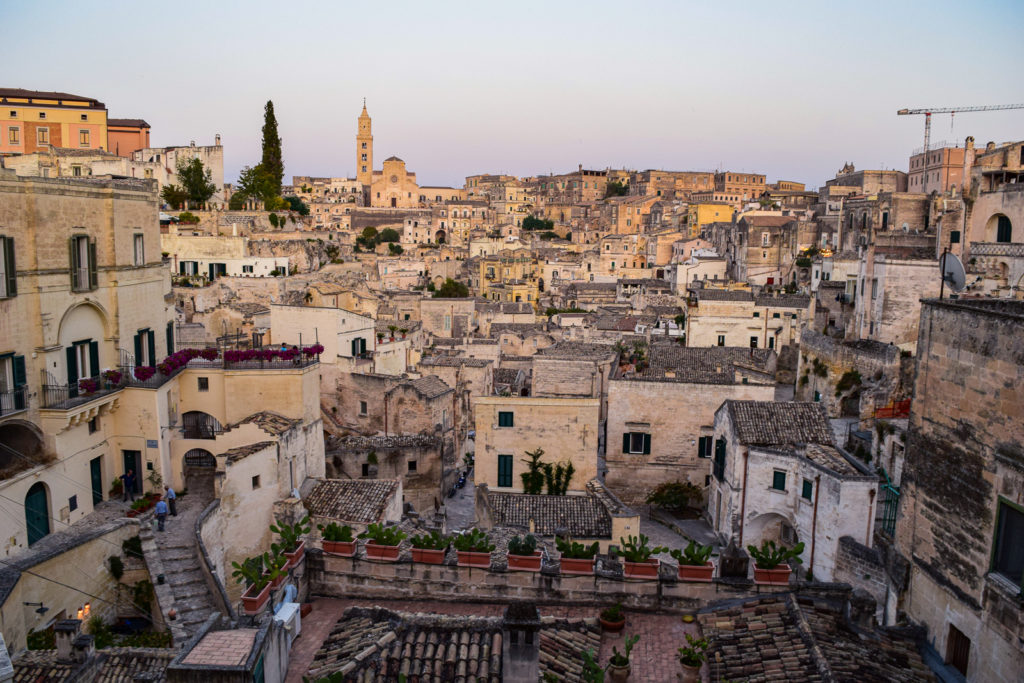
Of the many things to do in Matera, getting lost through the streets is one of them. We started off by exploring the Sasso Barisano portion of Matera, which runs from Piazza Vittorio Veneto to our hotel at Sextantio le Grotte della Civita and north of that. Via Duomo brought us directly to Piazza Vittorio Veneto. Piazza Vittorio Veneto is also known as Fountain square because of the large fountain that was once there to collect rain water that would runoff from the hill above. In the summer, bancarelle or markets take over the square with local handmade objects, antiques, and more. It is quite an interesting marketing to observe locals past belongings and watch as people barter over them.
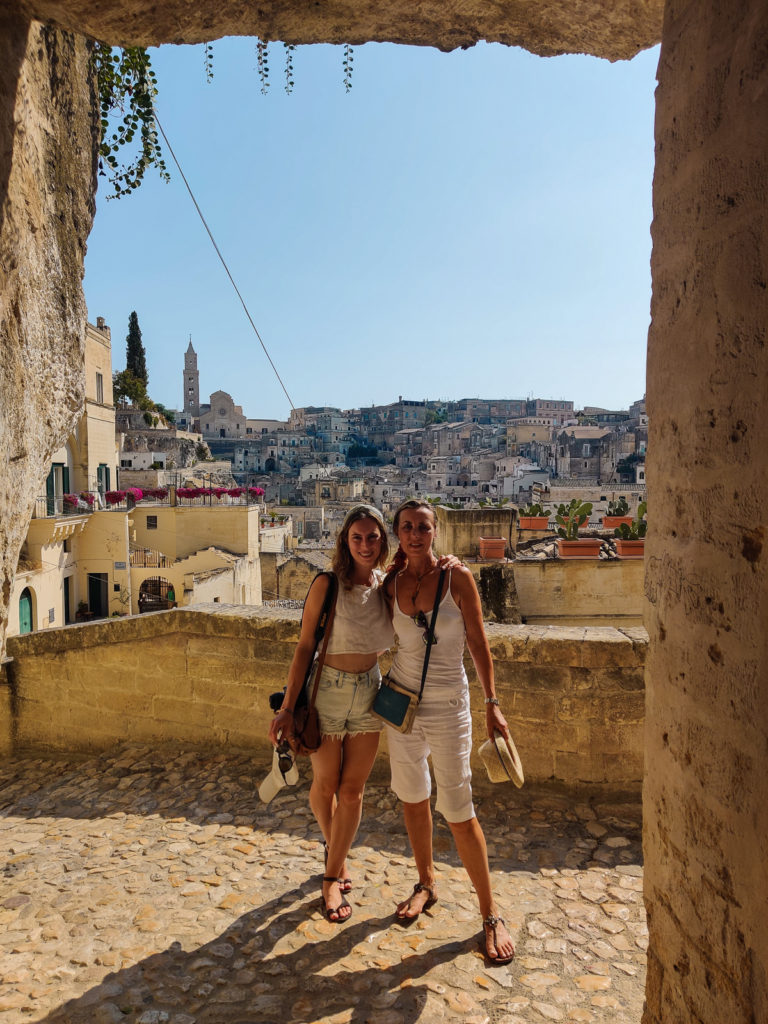
In the middle of the piazza is the famous underground tunnels and cisterns. One of the unique things to do in Matera is that you can sign up for a tour of the underground town, but we did not since we were short on time. The underground town starts at Piazza Veneto Vittorio and extend all the way out below Matera till the old Annunziata convent. The size is about 5,000 meters squared. There’s evidence that there were cisterns, shops, houses, and even “snow rooms” that acted as refrigerators to conserve food, underground. The most notable part of the underground town has to be Palombaro Lungo, a huge reservoir of water beneath Piazza Vittorio Veneto. When it rained, it was used to collect and distribute water to Matera.
In 1993, a panorama view point was built where there was once a wall that blocked the view of the Sasso Barisano area. That’s open to the public and pictured above.
<h3 id=”vp2″>
4. View Point Panorama #2: Church of Saint Peter Barisano
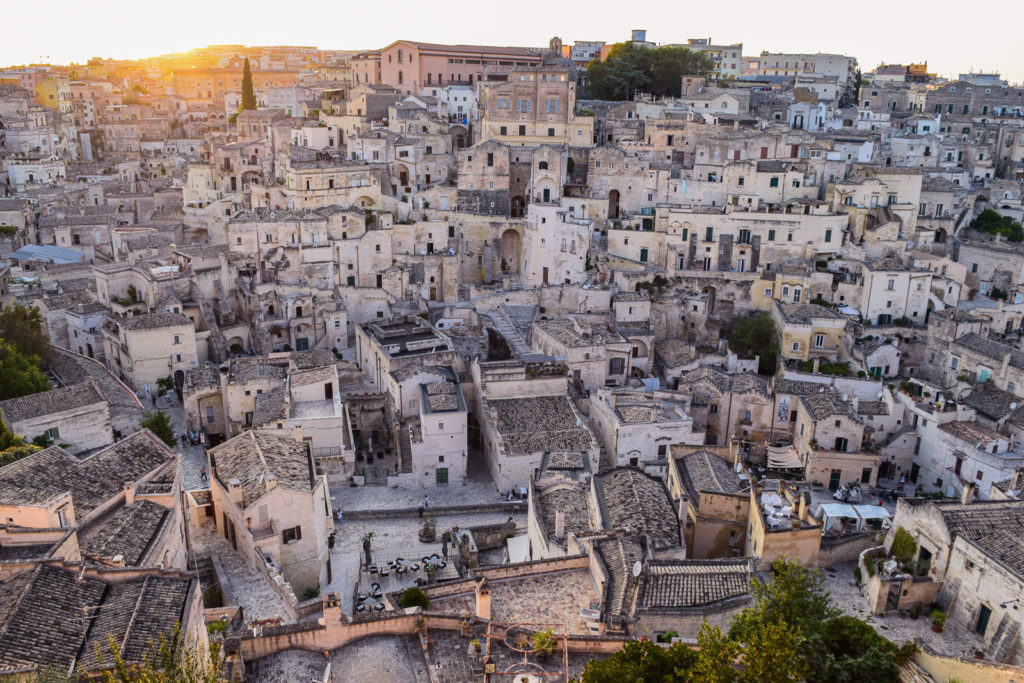
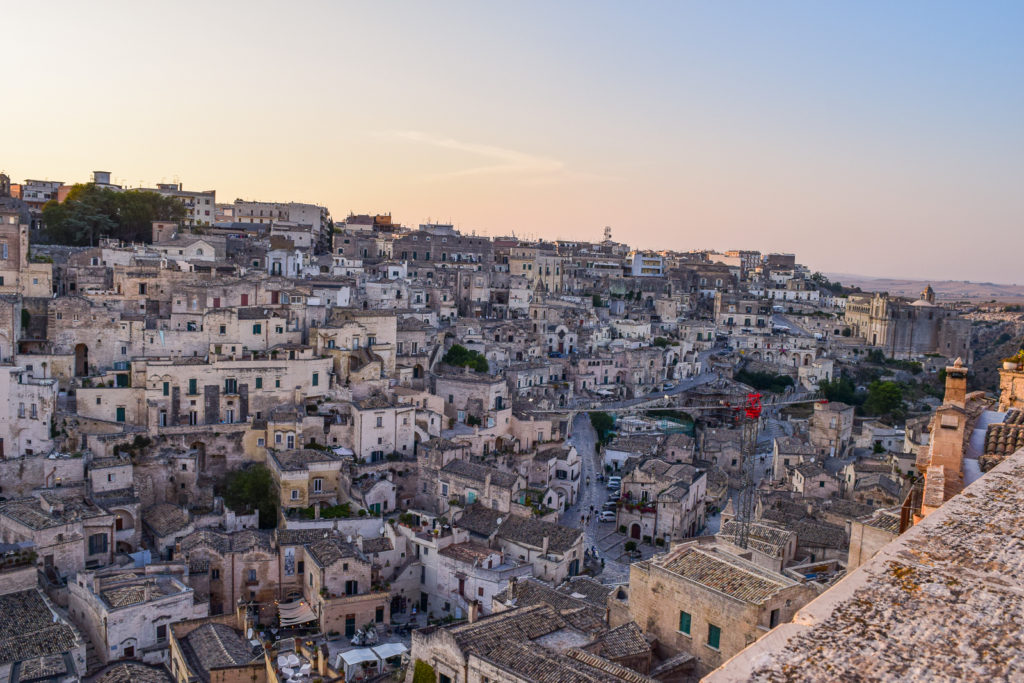
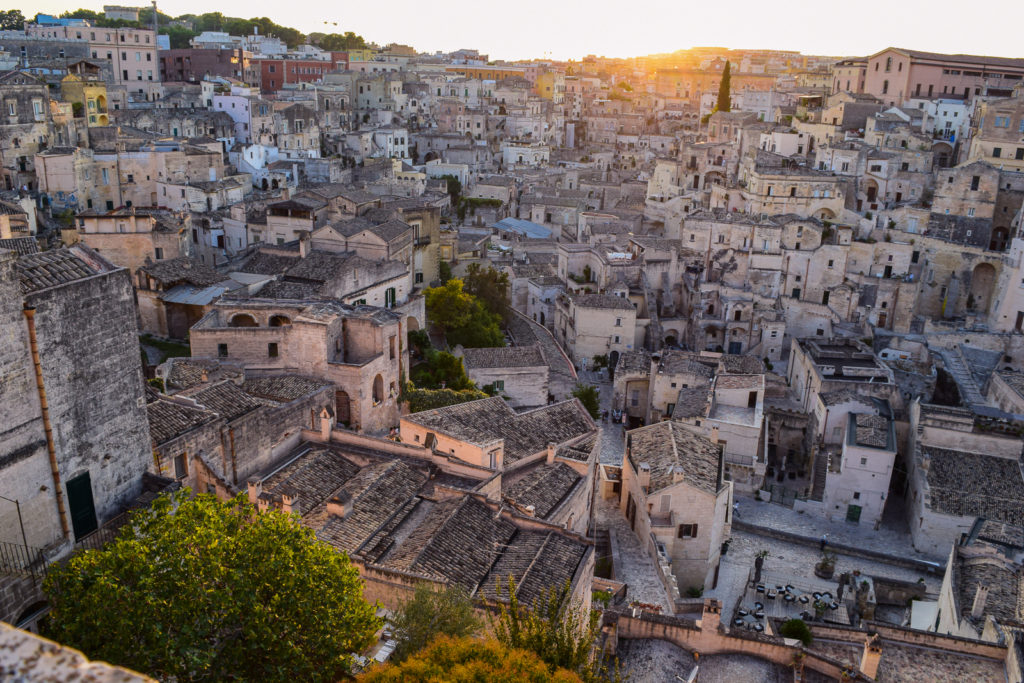
My second view point panorama area is Church of Saint Peter Barisano. From here you can catch a perfect glimpse of Matera–immobile, a frozen snapshot of what it looked liked in the past, abandoned and forgotten. Around 18,000 people lived in these cave-like grottos with no windows or air in unhealthy and deplorable living conditions. Animals lived with locals in the caves leading to filth, a lot of disease, and unhealthy water. Some locals and people who visited the caves of Matera compared them to Dante’s inferno. As family sizes got bigger, the locals would dig there way through the caves, making them bigger and creating new rooms for their family members.
Today, 30-40% of the caves, or sassi, you see in Matera are abandoned. The ones that are used can only be used for commercial use as a hotel, like the one I stayed at Sextantio Le Grotte della Civita, a restaurant, like La Lopa that I ate at, a store, and more.
<h3 id=”vp3″>
5. View Point Panorama #3: Church and Convent of Saint Agostino
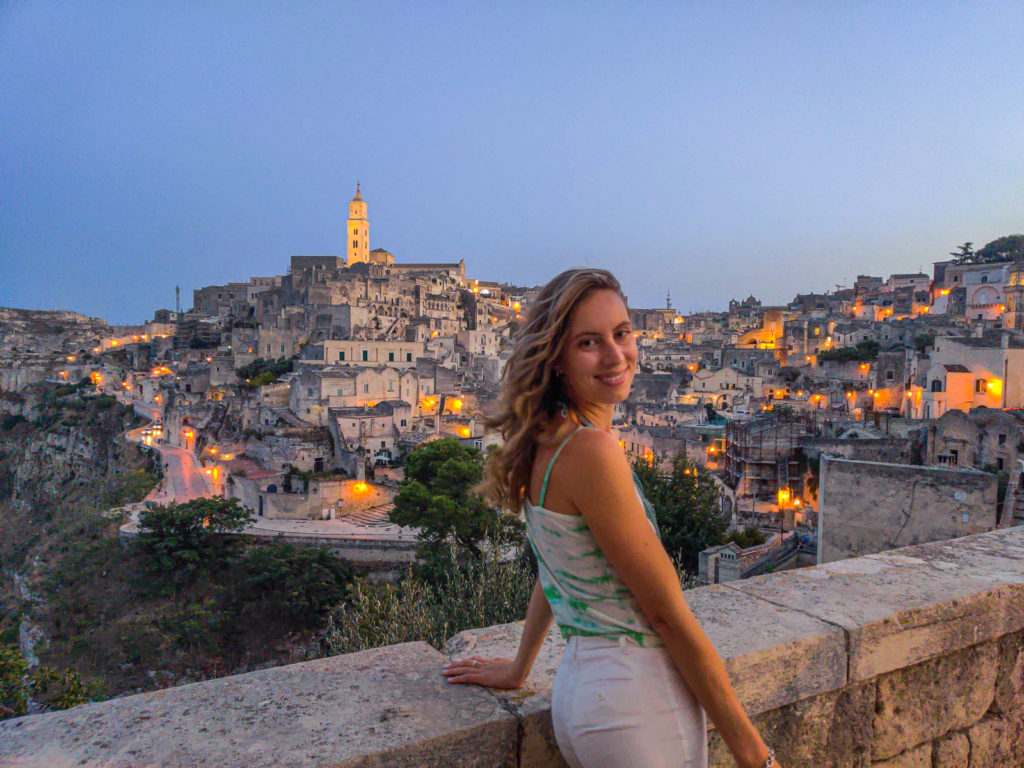
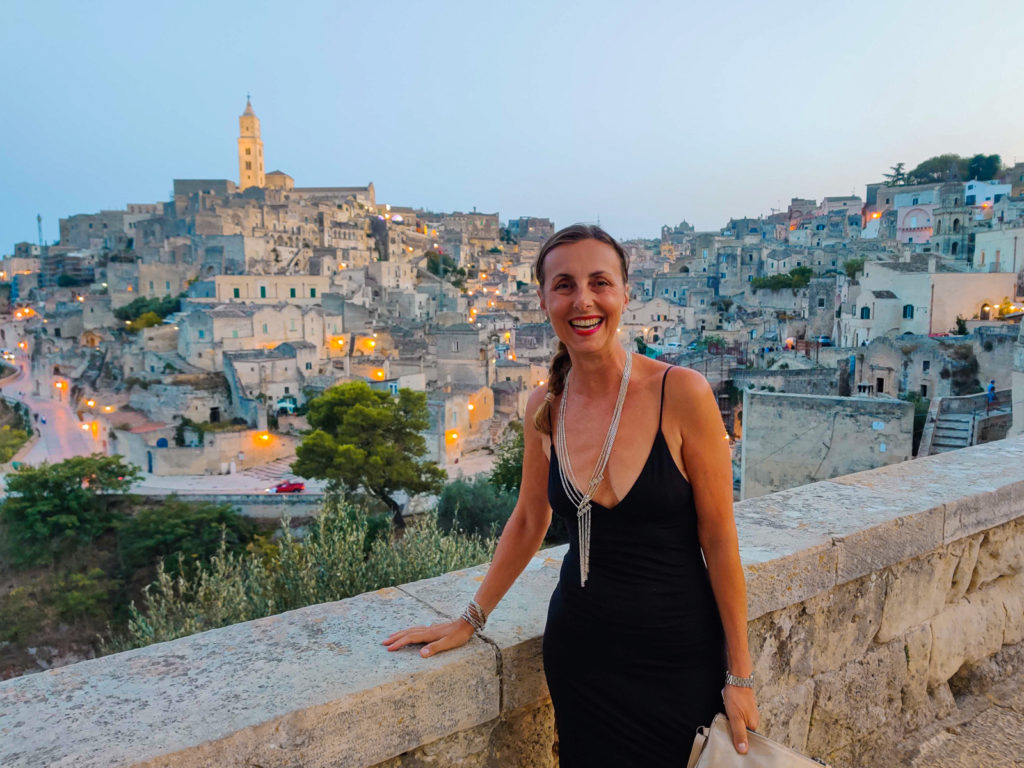
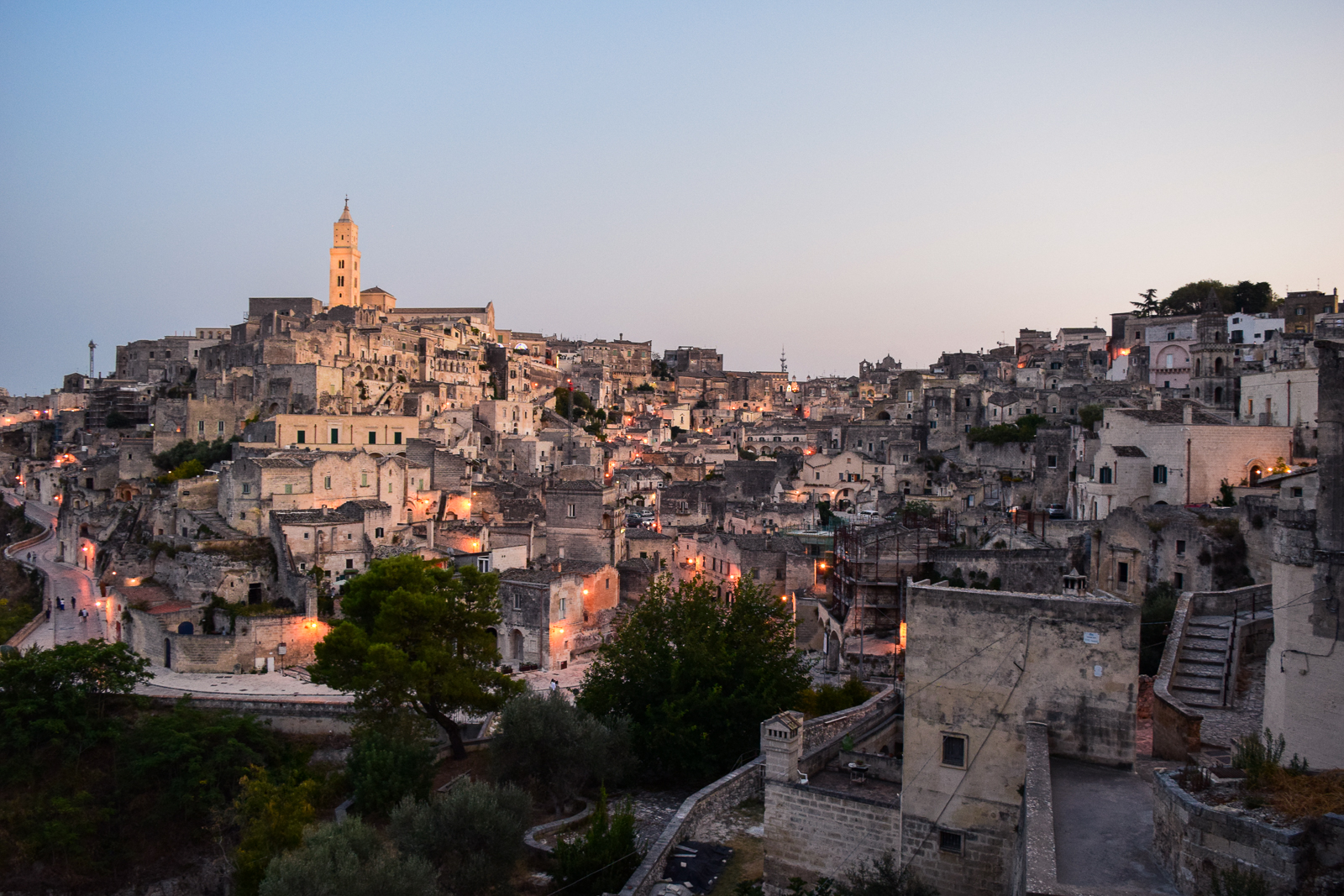
If you haven’t figured it out yet, one of my favorite things to do in Matera is look for those breathtakingviews. We headed to the church and convent of Saint Agostino to watch the sunset. The 1592 church and convent has had many lives…from a church to a convent, an army shelter, a prison, and even a nursing home. An earthquake destroyed the church in 1734. In 1747, it was rebuilt. Today, it houses the Superintendance for Architectural and Environmental Heritage. From the entrance you have a unpenetrated view of the Sassi Barisano. Shortly after the sun disappeared, the sky turned purple. The mountains to the left of Matera became black and a crescent moon hung over the crest of the rocky Sassi Barisano, lit up like a nativity scene. It was the perfect picture. We ended the night at this point with dinner at La Lopa and continued our excursion of Matera, more specifically the Sassi Caveoso portion, the morning after starting with la gravina.
<h3 id=”gravina”>
6. La Gravina
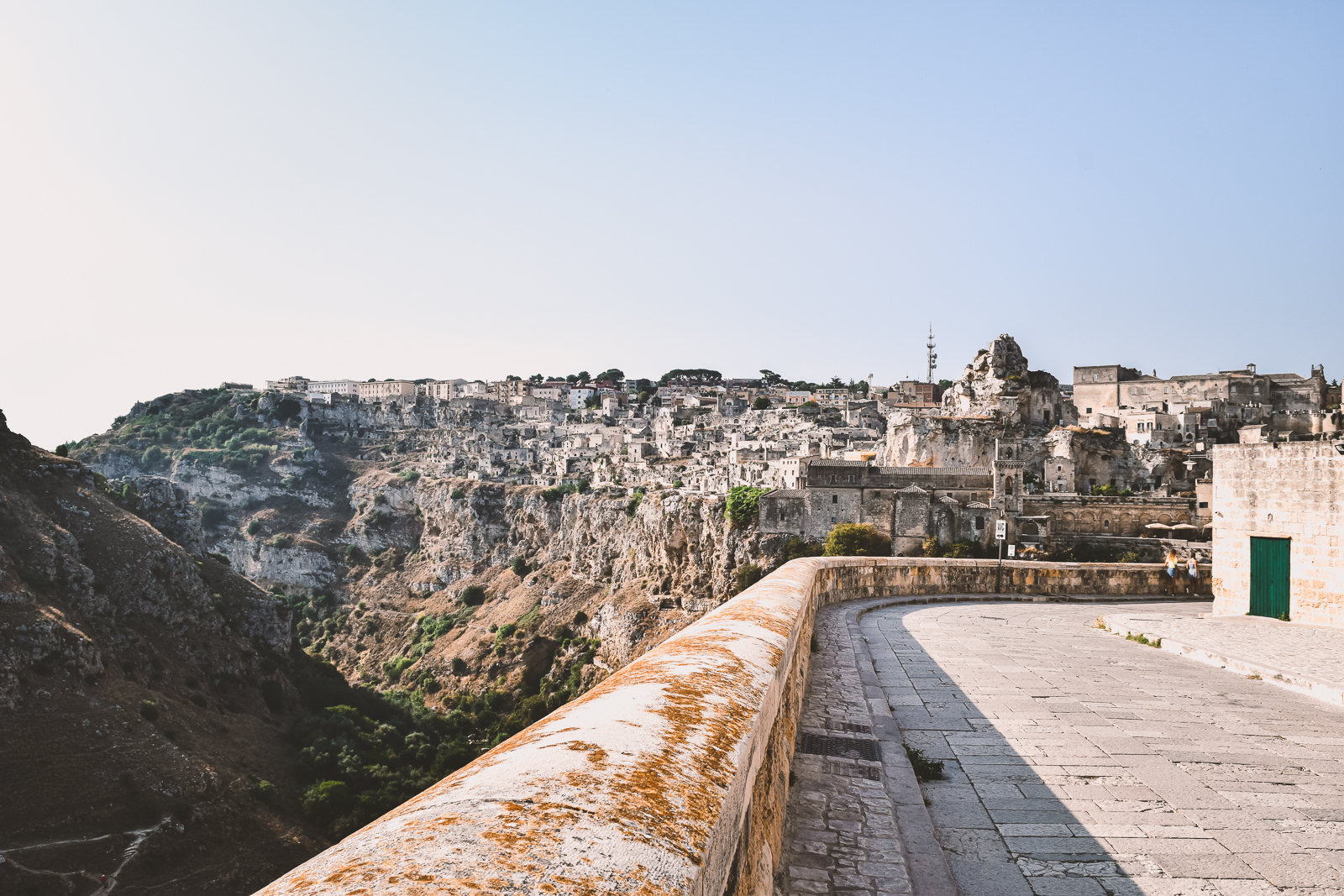
We woke up to the lulling sounds of cows mooing in the ravine or in Italian, la gravina. We ate a local breakfast filled with handmade quiches, pastries, cakes, and yogurts, outside at Sextantio Le Grotte della Civita‘s rock terrace facing the Murgia. Followng breakfast, we walked down the paved road alongside the ravina towards the other sassi of Matera, the Sassi Caveoso.
<h3 id”=idris”>
7. Santa Maria de Idris
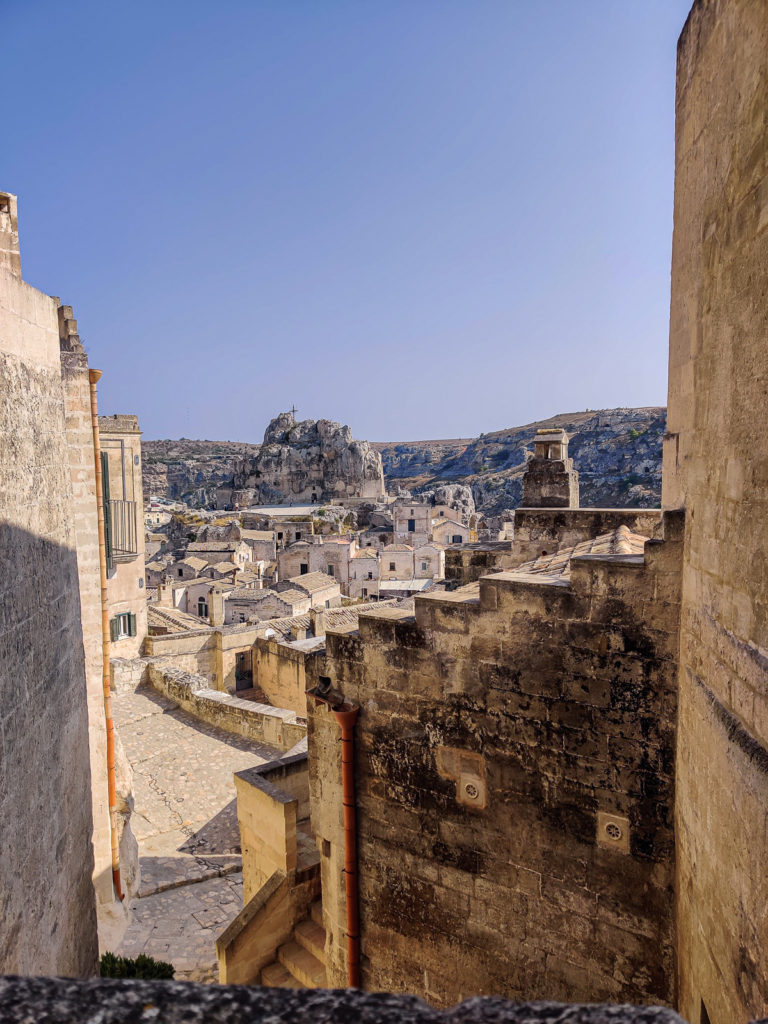
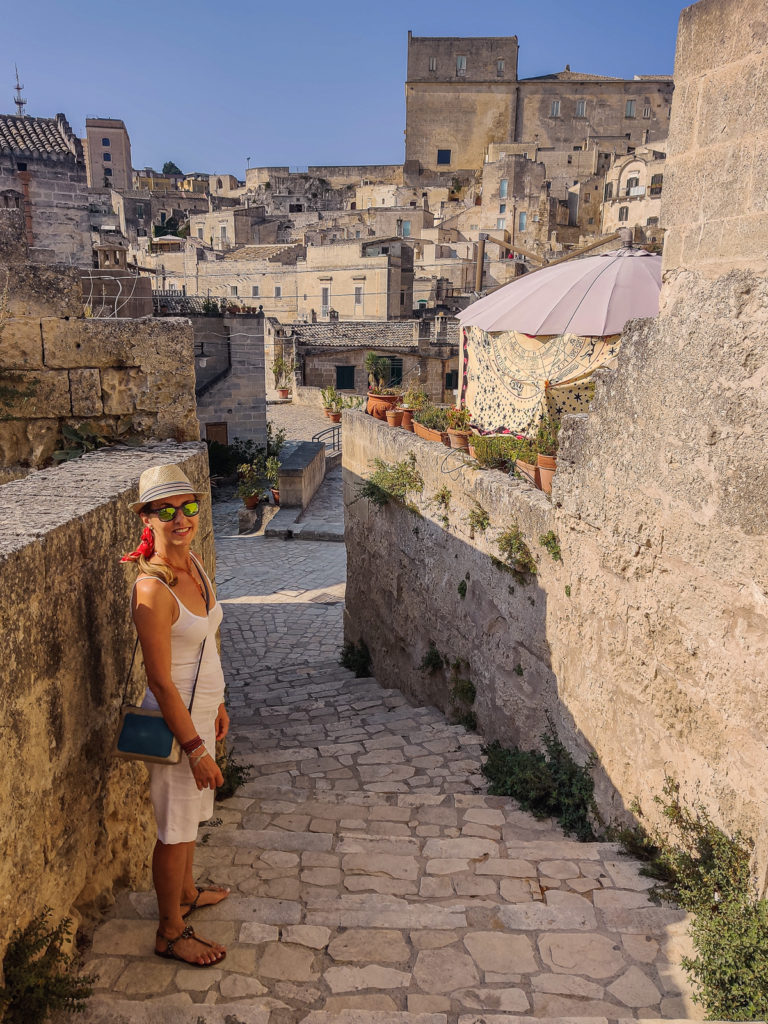
The first stop in the Sassi Caveoso area is Santa Maria de Idris, a big rock jutting out from the earth with a cross and church at the top. You may recognize the rock from the movie The Passion of the Christ. Santa Maria de Idris is home to the oldest crypt, dedicated to San Giovanni in Monterrone, that contains frescoes as far back as the 12th century. If you wish to visit the inside of this cave church, pay a small fee and go for it! If not, continue down Via Madonna dell’Idris as pictured above towards Vico Solitario.
<h3 id=”solitario”>
8. Vico Solitario and Local Artisan Craft: Cucù
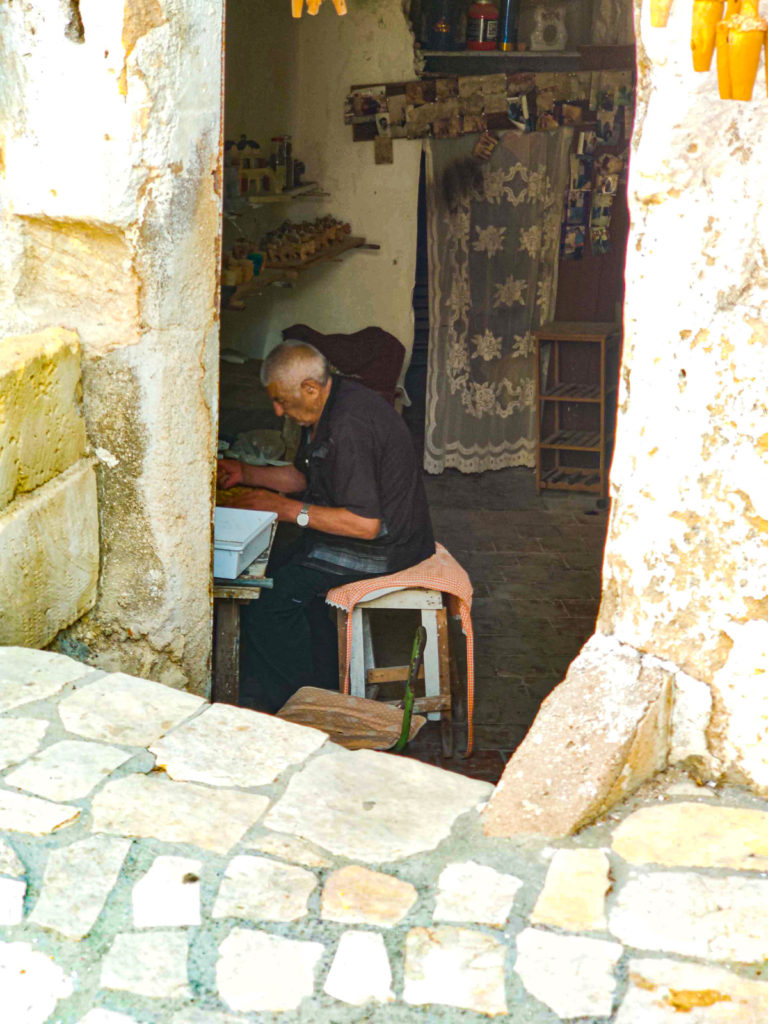
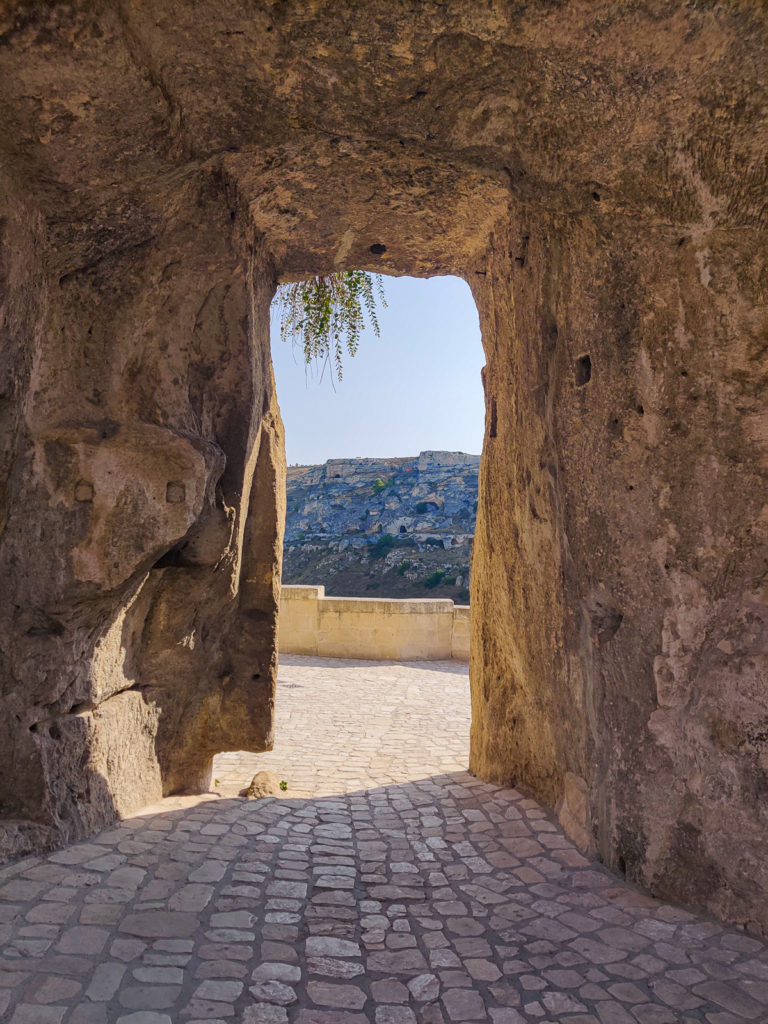
The locals who lived in Matera were mainly contadini, which translates to peasant farmers and/or artisans. While they lived in deplorable and poor conditions, the contandini were not poor in heart and love. There was no criminal behavior among them, which shows how civil they were and pure of heart. Today a few still continue the life and work of the contadino, now a lost art. You can find them in the Sassi Caveoso area, specifically in Vico Solitario, selling their handmade artwork, woodwork, pottery, and more.
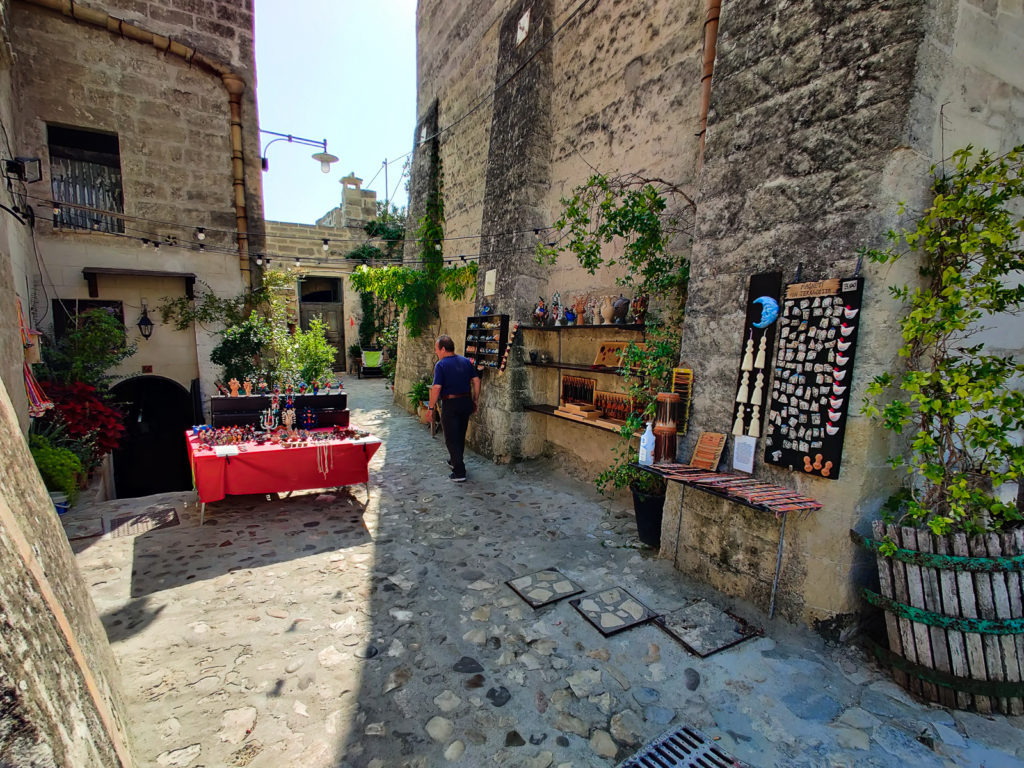
While shopping may seem touristy, it’s actually one of the most important things to do in Matera if you’re truly looking to experience the magic of it’s past and culture. If you look closely, one of the most common and typical Matera artisan crafts is that of the cucù. It’s a small whistle carved in the shape of a rooster that when blown on makes a rooster noise–cuckoo! More on the cucù in the article below.
<h3 id=”rione”>
9. Rione Casalnuovo and Local Artisan Craft: Tufo
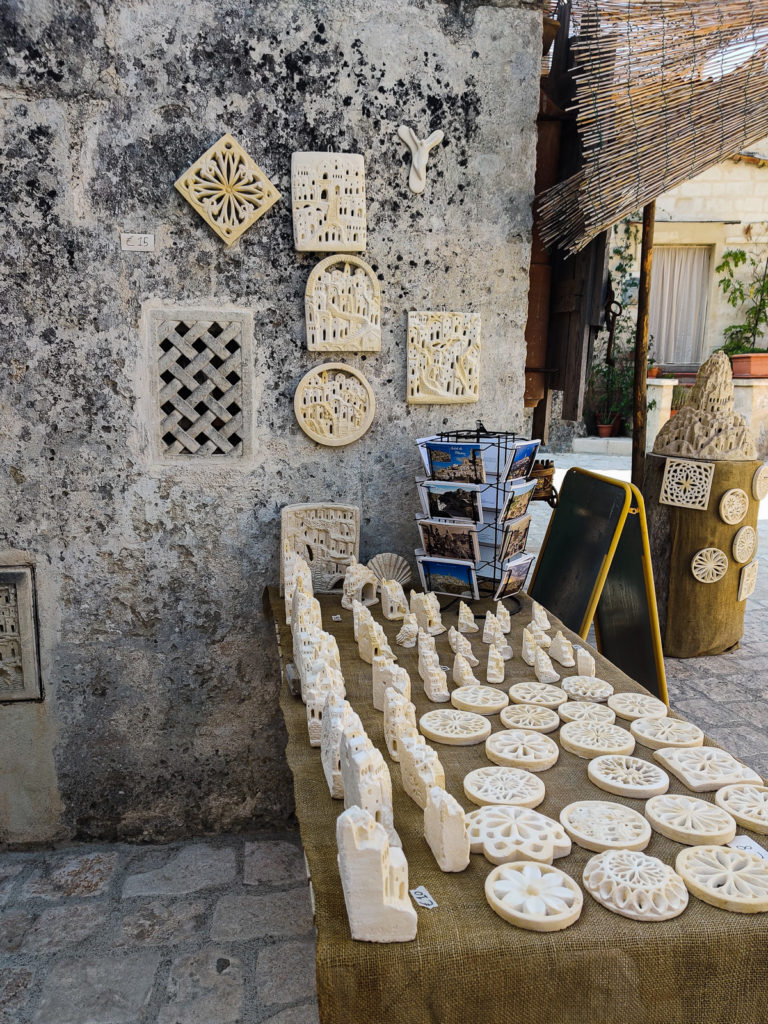
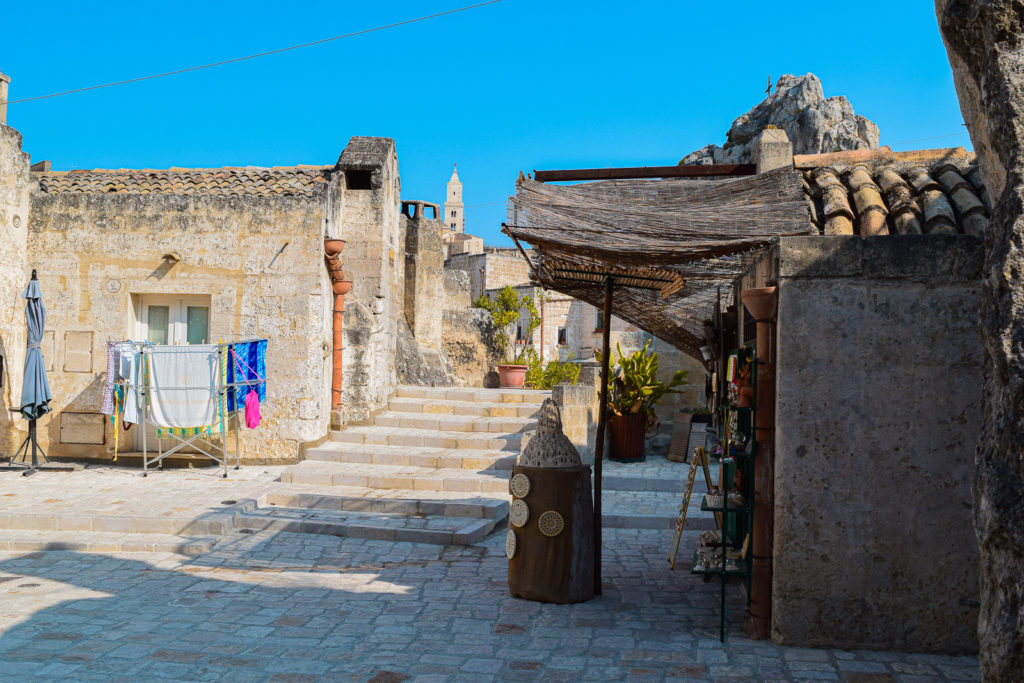
So it goes without saying that when in Matera, you need to be come acquainted with the rare craftsmanship of the few contadini that still remain. This vastly important knowledge, that has been recognized by UNESCO, scarcely remains dispersed throughout Matera. In addition to Vico Solitario, you can also find a good number of these contadini in Rione Casalnuovo. This area was were the immigrant population from Albany, Serbia, and Croatia eventually resided. They took on the work of contadini that worked with wax and leather. Many souvenir stores sell these typical and simple small Matera objects that take you back to a bygone era.
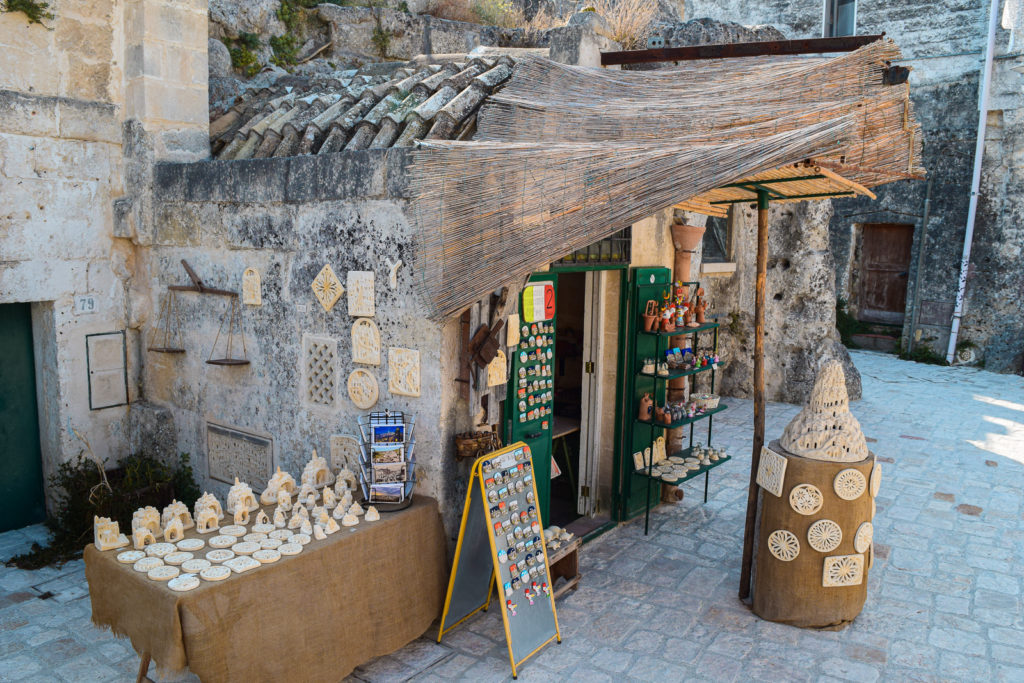
One of the most common souvenirs you’ll find is made from tufo stone, souvenirs made from actual rock that the majority of Matera is made from. Examples of tufo souvenirs are pictured above. More on tufo hand-carved souvenirs in the article below.
<h3 id=”confalone”>
10. Via Confalone and Local Artisan Craft: Cartapesta
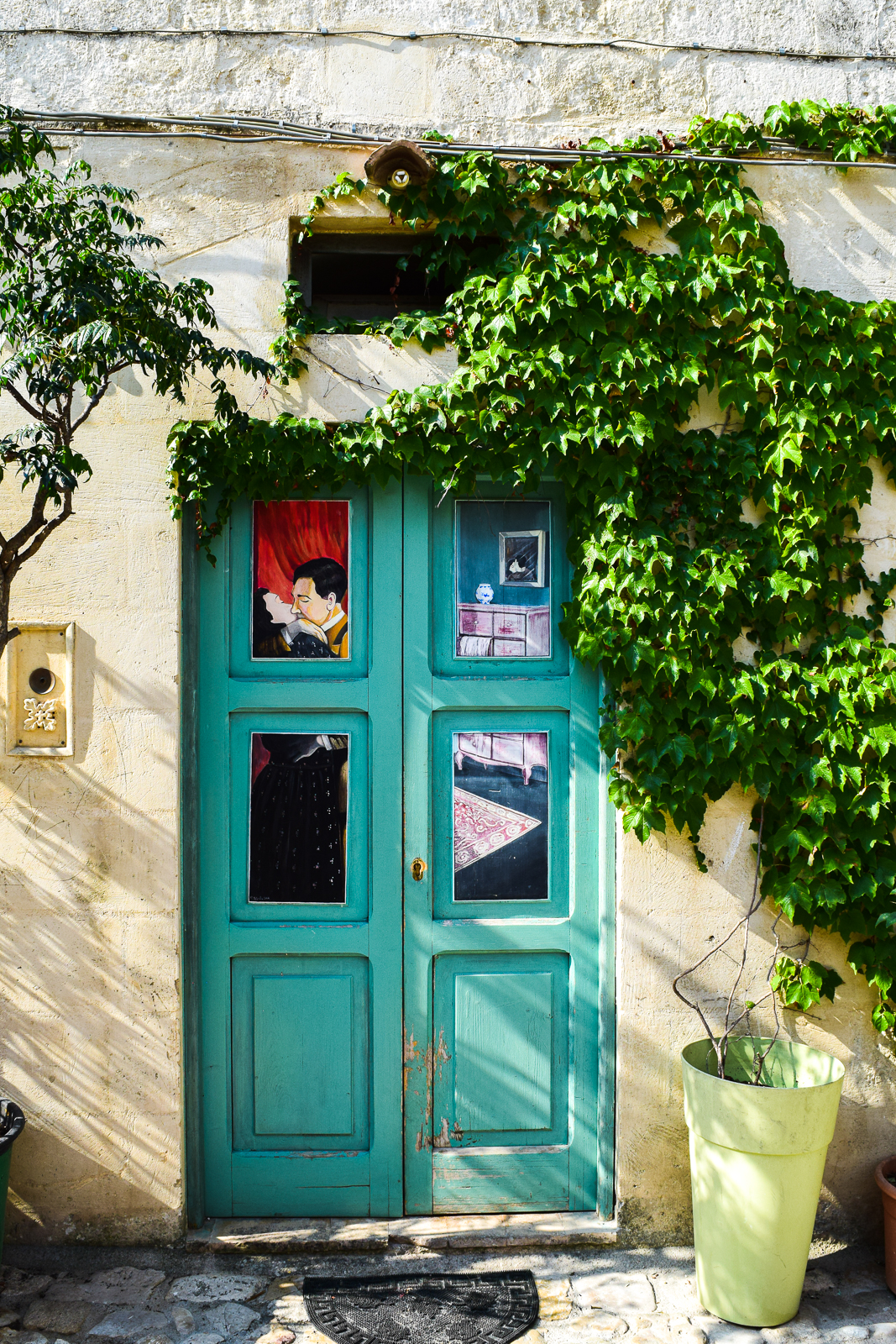
I continued to lose myself in the streets of the Sassi Caveoso area. The oldest artisan craft has to be that of cartapesta, or paper mâché. Tradition has it that every July 2, an enormous cart be decorated by students and the community of Matera in paper mâché and paraded around the town for the Festival of Madonna della Bruna–Matera’s annual village festival. More on cartapesta in the article below.
<h3 id=”buozzi”>
11. Via Bruno Buozzi and Local Artisan Craft: Bread Stamps
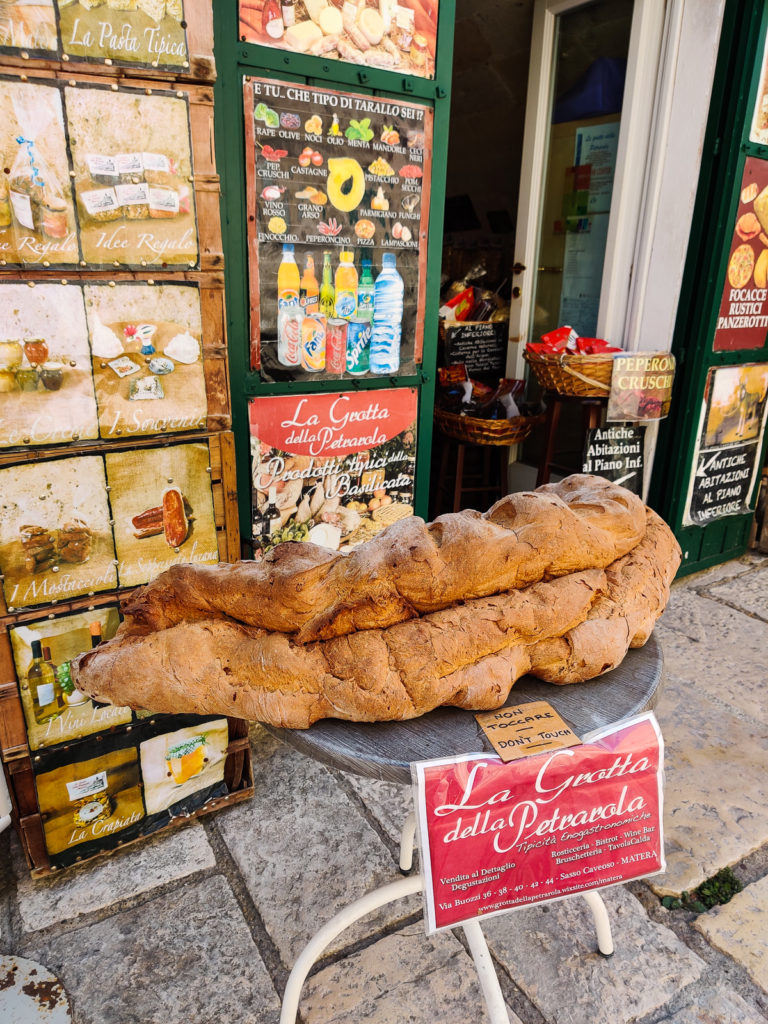
No matter where you are in the Sassi Caveoso area, you will somehow find your way back to the main road, Via Bruno Buozzi. Many of the stores here sell pane di Matera, or bread of Matera. On the list of important things to do in Matera, and eat, is the pane di Matera. A patrimony whose importance I’ve explained in great detail in my article here. Bread was foundation of the local people of Matera’s food group. They ate it for breakfast, lunch, and dinner. It was the primary food that created generations and generations of Materani. The bread would be baked in a communal oven. A family seal that was embossed into the bread would help families tell their bread apart from their neighbors. Today, you can have your own customized wooden bread seal created as a souvenir.
On the weekends, locals would purchase vegetables and either lamb or goat– the only meat available in the area. Families would go to communal ovens, have their meat cooked by others, and then bring it to the public cantine or caves where they would catch up, drink wine, and eat their own food brought from home. As I’ve mentioned, Matera was such a poor area that there was no such things as restaurants, osterie, or circoli or public clubs.
<h3 id=”vp4″>
12. View Point Panorama #4: Belvedere di Piazza Giovanni Pascoli
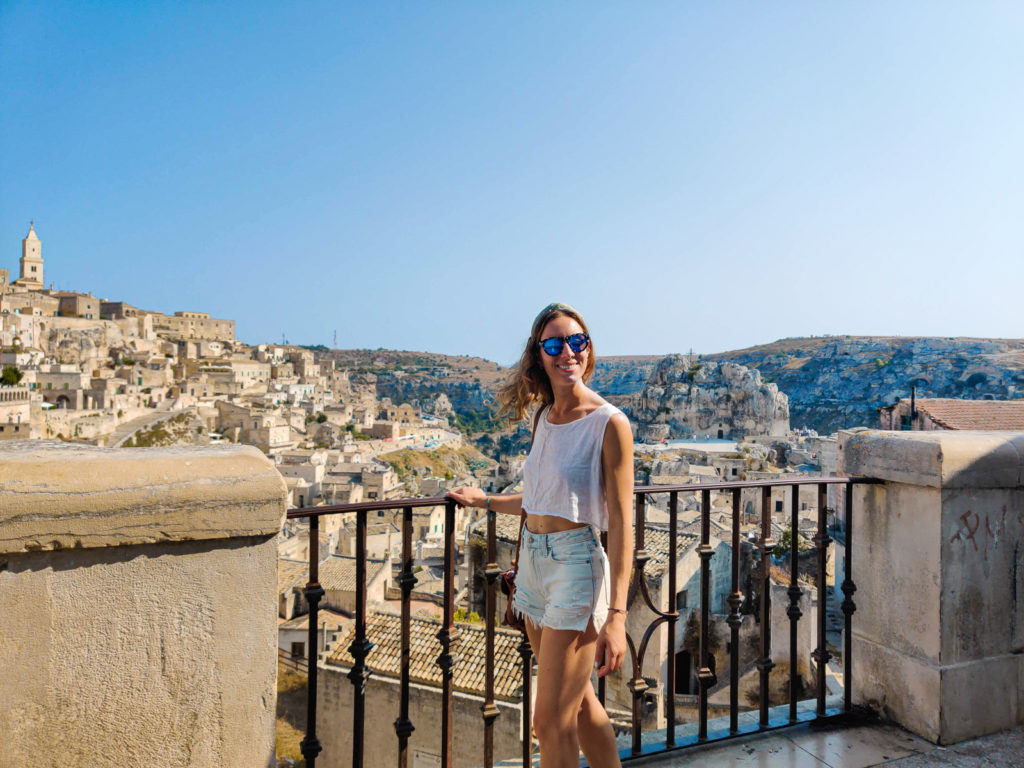
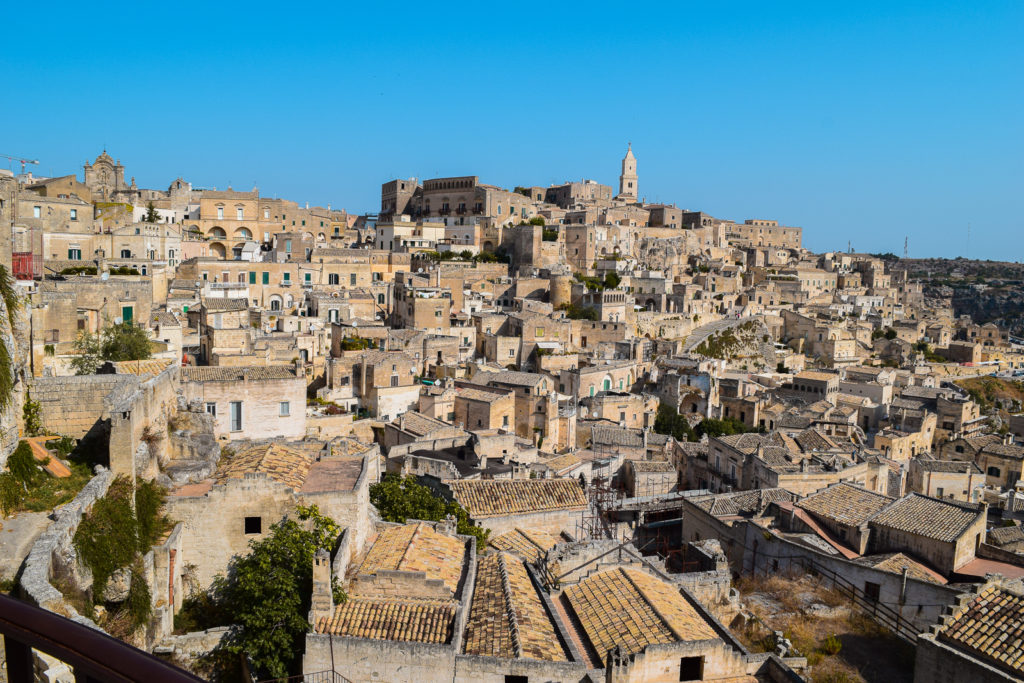
We finally make it to Piazza Giovanni Pascoli, our belvedere panorama view point number 5. I look out at the sassi in front of me and think. What happened to this old Matera that I’ve been going on about? What happened to the Sassi, which are now abandoned? Many of the caves were crumbling, falling apart, unsanitary, and full of rats. To maintain and restore them as best as possible to their original structure they put in place a new law. The sassi, or caves, you see today are a national monument for Italy, like Pompeii or the Roman Forum. They are evidence of history, a testimony to the origins of the contandino life. The contadino‘s creativity and skill is all around you. It can be witnessed in their spontaneous “architecture” that was born day by day, these functional caves.
<h3 id=”vp5″>
13. View Point Panorama #5: Murgia Park
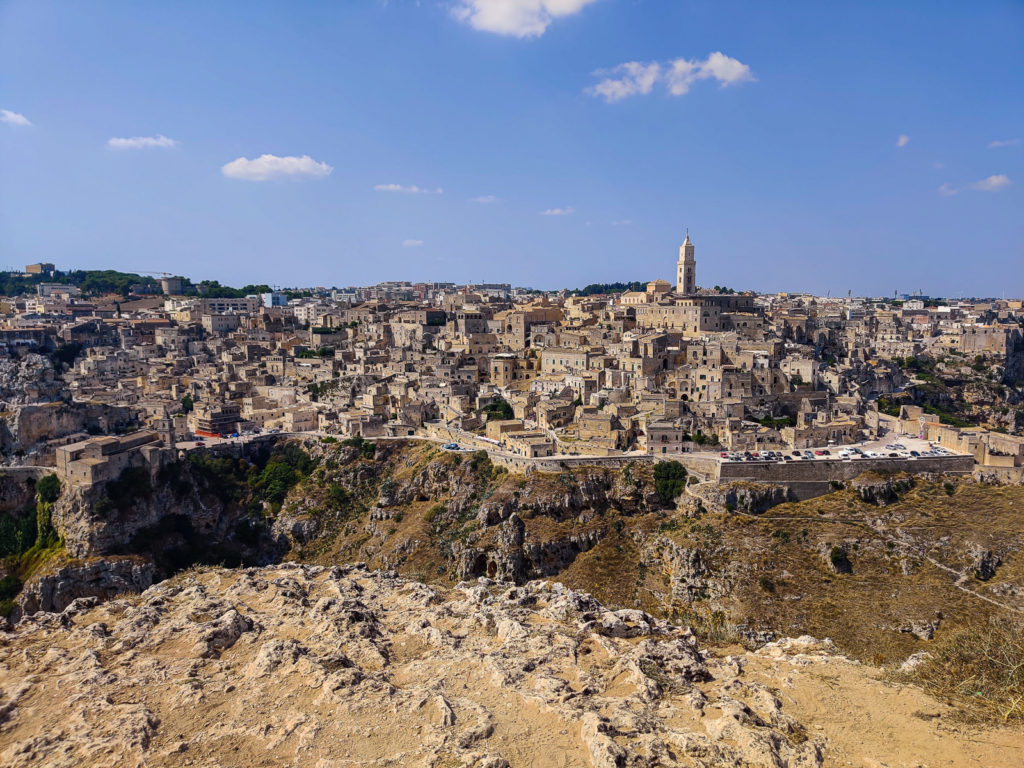
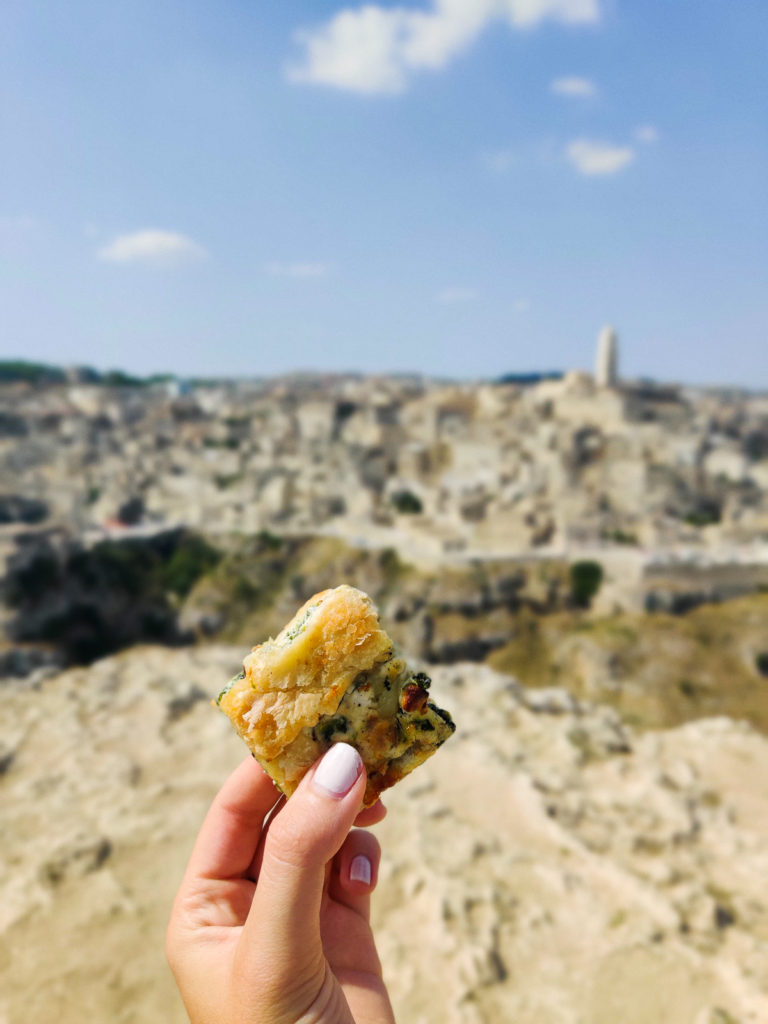
As we packed up our things and left our cave hotel Sextantio le Grotte della Civita, we made our way towards our last stop, Murgia park, located directly across from Matera. This is were old caves, Rupestrian churches with cave drawings and cave men and women bones can still be found. It’s history, untouched, and at its purest form. I walk as far out to the perimeter of Murgia park as I can. The only thing separating this flat rock from the city of Matera is the huge and deep ravine below me. I open a container full of small torte rustiche or salate, or salty pastries or quiches, and focaccie packed for me by Sextantio. I take a bite of my spinach torta salata and look out at the expansive and all-encompassing view of the Matera.
Why A Trip To Matera Will Enrichen Your Life?
The salty taste of the torta salata triggers a thought in my mind. Although Matera was abandoned, something was left in the rocks: an atmosphere a warm and comforting sensation that is, and was, life. When I look at Matera’s sassi, it’s almost as if they have their own soul. In an age where technology is at the forefront and human interactions are cut down by the day, making us less human, less connected, and less humane, today, Matera’s sassi are a symbol and representation of the opposite. That which we’ve lost and are losing: human life that enriches humanity.
<h2 id=”map”>
Map
Map #1: Sassi Barisano Area
Map #2: Sassi Caveoso Area
<h2 id=”travel”>
How to Get Around
You can’t drive into the historic Sassi area so the only way to see it is on foot. Trust me when I say, you’ll want to wear sneakers when walking around here. The town is made of slippery cobblestone streets and many, many stairs. Sandals and high heels are dangerous and not your go to here. If you struggle with stairs, you’ll want to give yourself a few days to see the whole place con calma, calmly. There are small carriages that take you from one side of the gravina to the other, but they don’t take you up.
<h2 id=”know”>
Important Things to Know
Get my look!

DIFF Eyewear
$89

Fitbit Versa 2 Petal/Copper Rose
$176.50

Abercrombie & Fitch Mid-Rise Denim Shorts
$39.95

Soludos Izzy Lace-Up Espadrilles
$40.00
>> Next: Essential Travel Guide to Polignano a Mare
Follow SVADORE on:
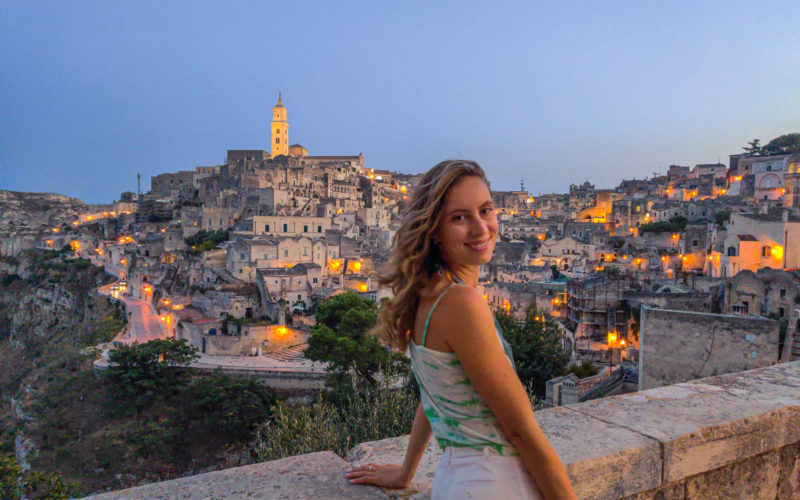
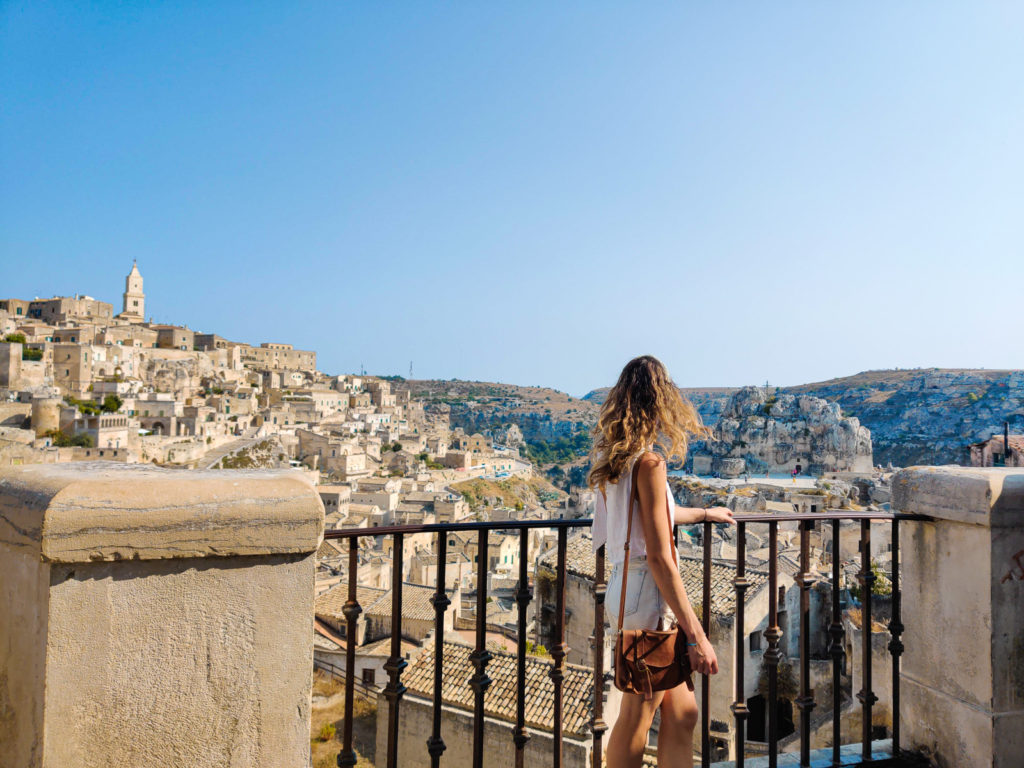
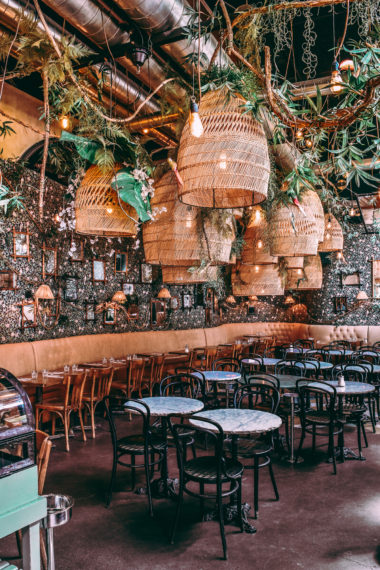
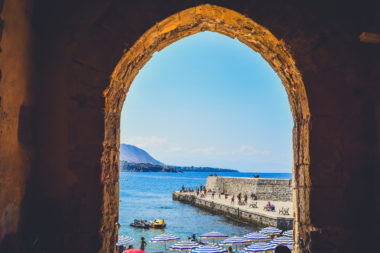
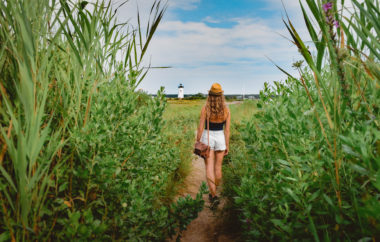
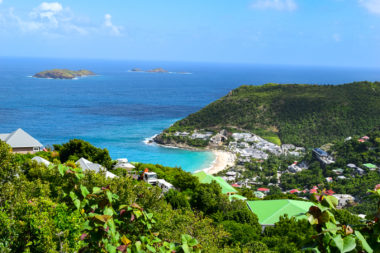
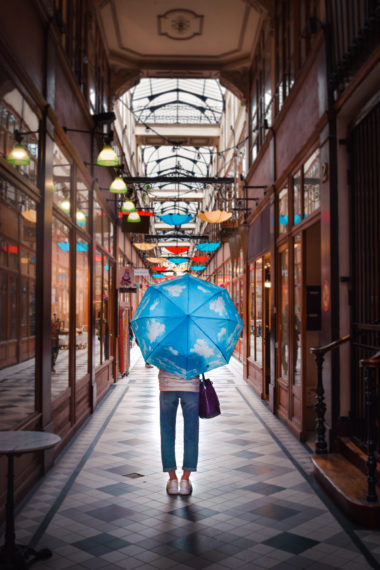
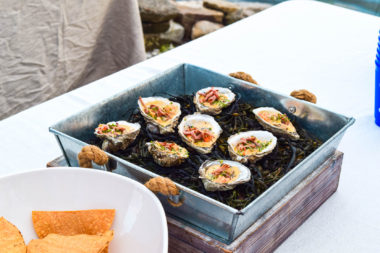

3 comments
This is a great read. Love all these beautiful photographs. Thanks for sharing 🙂
Dear Sveva this mine just because I wish to correct your expression:”evil Minister declared national shame Matera”. It was true but it was said to denounce the poor conditions of the inhabitants of the town and not to offend them. Thanks to that denounce it was initiated the change and the rinasciance.
Thank you for the wonderful articol.
Hi Donato and thanks for your message! My expression was definitely a hyperbole meant to create an exaggerated comparison between a fairytale story and Matera 🙂 But I will clarify what you noted above in my introduction, it merits clarification!